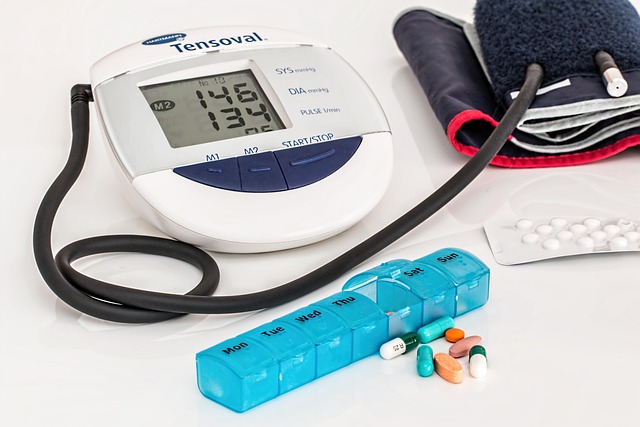NASH in Focus: How to Recognize and Address Fatty Liver Disease
Nonalcoholic steatohepatitis (NASH) is a progressive liver condition characterized by fat buildup, inflammation, and liver cell damage. Without proper intervention, it can progress to cirrhosis or liver failure. Understanding the risk factors and available management strategies is crucial for early action and maintaining liver wellness.

Nonalcoholic steatohepatitis is a condition where excess fat builds up in the liver, accompanied by inflammation and progressive damage to liver cells. Unlike alcoholic liver disease, NASH develops in people who consume little to no alcohol. The condition often progresses silently, making awareness and proactive health management crucial for those at risk. Early recognition and appropriate intervention can significantly alter the disease trajectory and improve long-term outcomes.
Key Risk Factors for NASH
Several factors increase the likelihood of developing NASH, with metabolic conditions playing a central role. Obesity, particularly abdominal obesity, stands as one of the most significant risk factors. Individuals with a body mass index above 30 face substantially higher risk compared to those maintaining healthy weight ranges. Type 2 diabetes and insulin resistance create an environment where the liver struggles to process fats efficiently, leading to accumulation and inflammation.
High cholesterol and elevated triglyceride levels contribute to fatty liver development, as the liver becomes overwhelmed with lipid processing. Metabolic syndrome, a cluster of conditions including high blood pressure, abnormal cholesterol levels, and increased waist circumference, dramatically increases NASH risk. Age also matters, with individuals over 50 showing higher prevalence rates. Genetic predisposition influences susceptibility, as certain gene variants affect how the body stores and metabolizes fat. Additionally, rapid weight loss, certain medications, and exposure to specific toxins can trigger or worsen the condition.
Monitoring and Early Detection
NASH typically develops without obvious symptoms in its early stages, making routine monitoring essential for at-risk individuals. Many people discover the condition incidentally during blood tests or imaging studies performed for other reasons. Elevated liver enzymes, particularly alanine aminotransferase and aspartate aminotransferase, often provide the first clue that liver inflammation may be present.
Regular health screenings become particularly important for individuals with diabetes, obesity, or metabolic syndrome. Blood tests can reveal abnormal liver function, though normal results do not completely rule out NASH. Imaging studies such as ultrasound, CT scans, or MRI can detect fat accumulation in the liver and assess the degree of damage. FibroScan, a specialized ultrasound technology, measures liver stiffness to evaluate fibrosis without invasive procedures. In some cases, liver biopsy remains the gold standard for definitively diagnosing NASH and determining the extent of inflammation and scarring. Healthcare providers may recommend periodic monitoring every six to twelve months for individuals with confirmed fatty liver disease to track progression and adjust treatment strategies accordingly.
Lifestyle Adjustments and Medical Options
Lifestyle modification forms the cornerstone of NASH management, with weight loss showing the most significant impact on disease reversal. Research demonstrates that losing 7 to 10 percent of body weight can reduce liver fat, decrease inflammation, and even reverse some fibrosis. Gradual weight reduction through balanced nutrition and increased physical activity produces better outcomes than rapid weight loss, which can paradoxically worsen liver inflammation.
Dietary changes should emphasize whole foods, vegetables, fruits, lean proteins, and whole grains while limiting processed foods, added sugars, and saturated fats. The Mediterranean diet pattern has shown particular promise in improving liver health markers. Regular physical activity, including both aerobic exercise and resistance training, helps reduce liver fat independent of weight loss. Aim for at least 150 minutes of moderate-intensity exercise weekly.
Currently, no medications are specifically approved for NASH treatment, though several are under investigation in clinical trials. Healthcare providers may prescribe medications to manage associated conditions such as diabetes, high cholesterol, or hypertension. Vitamin E supplementation has demonstrated benefits in some non-diabetic NASH patients by reducing inflammation, though it requires medical supervision. Pioglitazone, a diabetes medication, may improve liver histology in certain patients. Avoiding alcohol completely is essential, as even moderate consumption can accelerate liver damage in individuals with existing fatty liver disease.
Collaborative Care and Innovative Treatments
Effective NASH management requires coordination among multiple healthcare specialists. Primary care physicians typically oversee initial diagnosis and ongoing monitoring, while hepatologists or gastroenterologists provide specialized liver care. Endocrinologists manage diabetes and metabolic issues that contribute to liver disease progression. Registered dietitians develop personalized nutrition plans that support weight loss and liver health. Mental health professionals may assist with behavioral changes and address emotional challenges related to chronic disease management.
Research into NASH treatments continues to advance rapidly, with numerous pharmaceutical compounds in various stages of clinical trials. Promising drug candidates target different aspects of the disease, including fat accumulation, inflammation, and fibrosis. Some experimental therapies focus on improving insulin sensitivity, while others aim to reduce liver fat directly or prevent scarring. Bariatric surgery has shown substantial benefits for severely obese individuals with NASH, often leading to significant disease improvement or resolution. However, surgical intervention carries risks and requires careful patient selection and lifelong commitment to dietary changes.
Emerging technologies such as artificial intelligence and advanced imaging techniques are improving diagnostic accuracy and enabling earlier detection. Researchers are also investigating the role of gut microbiome manipulation, specific nutritional supplements, and targeted gene therapies as potential future treatment options.
Steps to Protect Your Liver Over Time
Long-term liver protection requires sustained commitment to healthy habits and regular medical follow-up. Maintaining a healthy weight through balanced nutrition and consistent physical activity remains the most effective preventive strategy. Avoiding unnecessary medications, supplements, and herbal products that can stress the liver helps minimize additional damage. When medications are necessary, working with healthcare providers to choose liver-friendly options and monitor for adverse effects is important.
Regular health screenings allow for early detection of disease progression and timely intervention. Individuals with NASH should avoid alcohol entirely and limit exposure to environmental toxins. Staying current with vaccinations, particularly hepatitis A and B vaccines, protects against additional liver threats. Managing coexisting conditions such as diabetes, hypertension, and high cholesterol through medication adherence and lifestyle measures reduces overall disease burden.
Building a support network of healthcare providers, family members, and potentially support groups can provide motivation and accountability for maintaining healthy behaviors. Educating yourself about NASH and staying informed about new research developments empowers better decision-making regarding your health. Small, consistent changes maintained over time produce more sustainable results than dramatic but short-lived efforts.
NASH represents a serious but manageable condition when addressed proactively. Through awareness of risk factors, commitment to lifestyle modifications, appropriate medical care, and ongoing monitoring, individuals can significantly reduce their risk of progression to advanced liver disease. The key lies in early recognition and sustained action to protect liver health for the long term.




